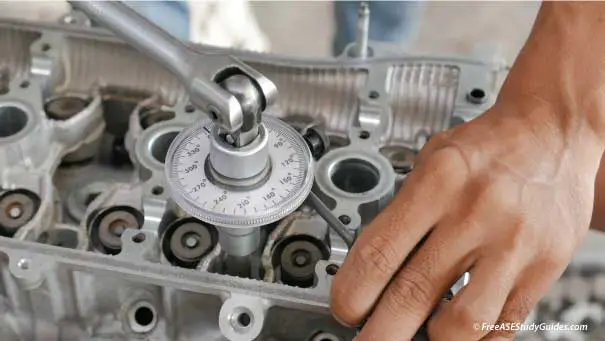ASE A1 Engine Repair Practice Test
1. An engine's connecting rod bearings are worn, resulting in low oil pressure and a knocking sound at startup. Which of the following could be the cause?
- A. Low contaminated engine oil.
- B. Clogged crankshaft oil galleries.
- C. Clogged air filter.
- D. Both A and B.
2. Technician A says to measure the oil pump gear end-play before reinstalling the pump. Technician B says to use a feeler gauge and a straight edge to measure oil pump body flatness. Who is correct?
- A. Technician A
- B. Technician B
- C. Both A and B
- D. Neither A or B

3. The technician in the illustration above is:
- A. Setting torque with a torque wrench.
- B. Setting angle with an angle gauge.
- C. Adjusting the rocker shaft.
- D. None of the above.
4. The charging light on the instrument panel intermittently flickers while driving. The MOST likely cause of this condition is:
- A. An open positive charging cable.
- B. A misaligned power steering pulley.
- C. A faulty clutch pulley bearing.
- D. A weak accessory belt tensioner.
5. A vehicle has black-colored exhaust and a lack of power when accelerating. Technician A says a rich air-fuel ratio may have clogged the catalytic converter. Technician B says to use a back pressure tester to test for a restriction in the exhaust system. Who is correct?
- A. Technician A
- B. Technician B
- C. Both A and B
- D. Neither A or B